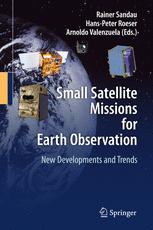

Most ebook files are in PDF format, so you can easily read them using various software such as Foxit Reader or directly on the Google Chrome browser.
Some ebook files are released by publishers in other formats such as .awz, .mobi, .epub, .fb2, etc. You may need to install specific software to read these formats on mobile/PC, such as Calibre.
Please read the tutorial at this link: https://ebookbell.com/faq
We offer FREE conversion to the popular formats you request; however, this may take some time. Therefore, right after payment, please email us, and we will try to provide the service as quickly as possible.
For some exceptional file formats or broken links (if any), please refrain from opening any disputes. Instead, email us first, and we will try to assist within a maximum of 6 hours.
EbookBell Team

5.0
20 reviewsThis book was compiled from those contributions given at the 7th IAA Symposium on Small Satellites for Earth Observation, May 4-8, 2009, Berlin (IAA – International Academy of Astronautics) which are representative for the new developments and trends in the area of small satellites for Earth observation. They reflect the potentials of a diversity of missions and related technologies. They may be based on national projects or international co-operations, single satellites of constellations, pico-, nano-, micro- or mini-satellites, developed by companies, research institutions or agencies. The main focus is on new missions to monitor our Earth’s resources (chapter 1), and the environment in which our Earth is embedded (chapter 2). Chapter 3 deals with distributed space systems, the unique feature of small satellites. The university satellites chapter (chapter 4) shows the high quality which is already reached by some of the universities worldwide. Chapter 5 gives insight into new developments in the fields of instruments and technologies. The last two chapters (chapters 6, 7) deal with subjects, necessary to make use of the data coming from the satellite systems: attitude and position.